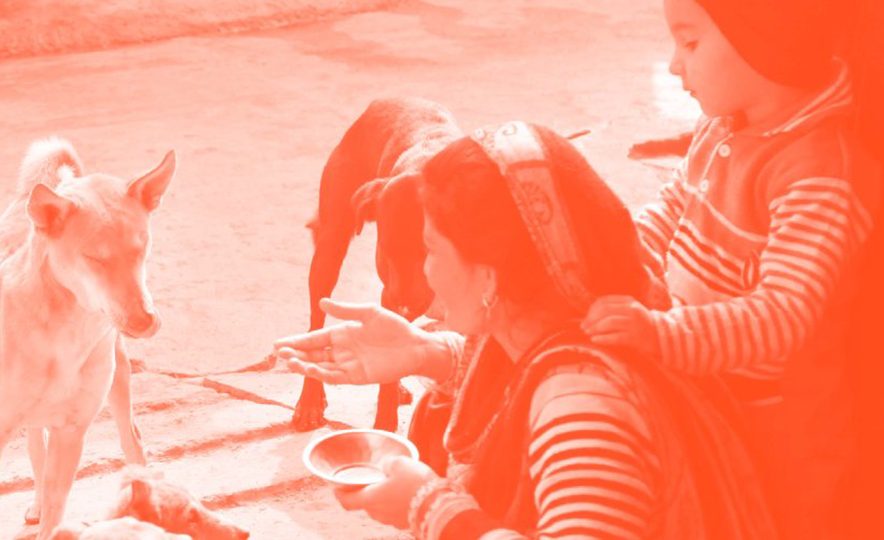



27 September 2022 (Bhutan) – Bhutan is a mountainous country of over 788,615 people in the Eastern Himalayas, bordered by China and India. Along with its highly varied climate and rich biodiversity of plants and animals, the country has a sizeable dog population of around 102,000 dogs. As a result, the presence of rabies – a high-mortality, zoonotic disease mainly mediated by dogs, and endemic in southern border regions of Bhutan – imposes a great responsibility on the government, veterinary workers, and the public to implement effective control and eradication measures.
Dog on a ledge overlooking a dzong fortress, Bhutan
For more than a decade, the government pursued a series of ongoing campaigns to control dog populations and rabies. Today, the disease is almost eradicated in the country, with the last rabies death recorded in 2020. First known as the “National Dog Population Management and Rabies Control Project”, the programme aimed to “capture, neuter, vaccinate and release” dogs, involving these steps. Its goals included:
The programme involved methods such as use of mobile applications, microchips, and QR codes to inform users of dog locations, vaccination, sterilization, and registration status, coordination platforms like a “daily progress dashboard” by the National Centre for Animal Health (Department of Livestock, Ministry of Agriculture and Forests, Bhutan), and extensive training of staff and volunteers.



For more than a decade, the government pursued a series of ongoing campaigns to control dog populations and rabies. Today, the disease is almost eradicated in the country, with the last rabies death recorded in 2020.
Street dogs sleep in the sun, Haa Valley, Central Bhutan
Efforts are ongoing and continual however, as challenges include the recurrence of small, untreated populations that keep breeding, and dogs which move from other rural areas. Other challenges are pet dog abandonment, which is why the education and involvement of the community to increase awareness of responsible dog ownership is a key component.
The nationwide programme was officially kicked off in 2009 and continues to this day, with recent initiatives to achieve 100% sterilization of free roaming dogs. Animal health officials in Bhutan are optimistic about reaching the goal to reduce and eradicate human deaths via dog mediated rabies by 2030. Despite broad success, the plan continues to be to maintain constant vigilance and vigorously conduct the programme continually into the future, at least twice per year or more, as necessary.
This article is part of a series published for activities for World Rabies Day 2022, to share challenges and successes in controlling the disease. With a fatality rate of almost 100% in humans and animals alike, rabies remains a global threat, killing approximately 59,000 people every year.
WOAH has long been committed to tackle the disease, supporting its Members in the path towards a rabies-free future. Dog-mediated rabies is set for elimination by 2030. With this goal in mind, WOAH strives to coordinate intersectoral action at a global level and to accompany countries in the development and implementation of their national rabies strategies.
Banner photo: Street dogs lie in the shadow of a wall, Bhutan.




